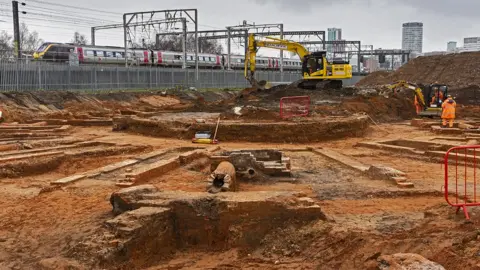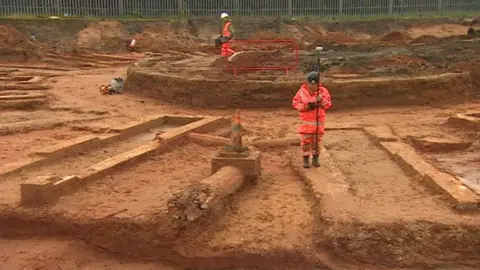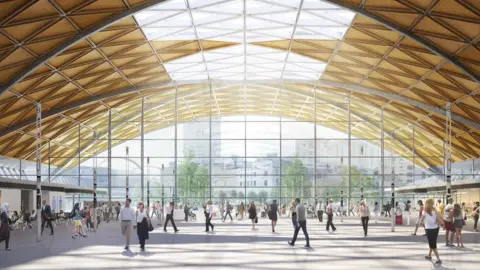Birmingham HS2 work unearths 1837 railway turntable
 HS2
HS2HS2 work has unearthed a Robert Stephenson-designed railway turntable in Birmingham.
Excavations at the former Curzon Street station, which is set to be a new station for HS2, exposed the structure thought to date from 1837.
Archaeologists are now working to expose remains of the former Grand Junction Railway terminus.
The discovery was described as "extraordinary" by an HS2 spokesman.
The remains show evidence of the base of the central turntable, the exterior wall and the inspection pits that surrounded it.
Civil engineer Stephenson, son of "Father of the Railways" George Stephenson, enabled the significant expansion of railways in the mid 19th Century, with the London and Birmingham Railway (L&BR) his first major commission, Network Rail said.
The original Curzon Street station building, known as the L&BR terminus, opened in 1838 and is Grade I-listed.
At that time, the journey to London took almost five hours.

HS2's new Curzon Street station will become home to the first intercity terminus built in Britain since the 19th Century.
It will provide seven platforms, a public space and be part of an extended tram network.
Jon Millward, historic environment adviser at HS2 Ltd, said: "The discovery of what could be the world's oldest railway roundhouse [the building that housed the turntable] on the site of the new HS2 station in Birmingham city centre is extraordinary and fitting as we build the next generation of Britain's railways."
Further excavations are due to take place later this month, with experts looking to record the "historical significance" of the remains and determine whether they can be preserved in their current location.
 WSP
WSP
Follow BBC West Midlands on Facebook, on Twitter, and sign up for local news updates direct to your phone
